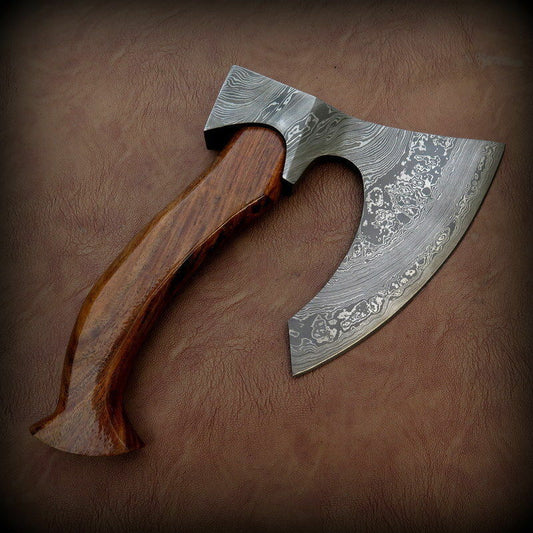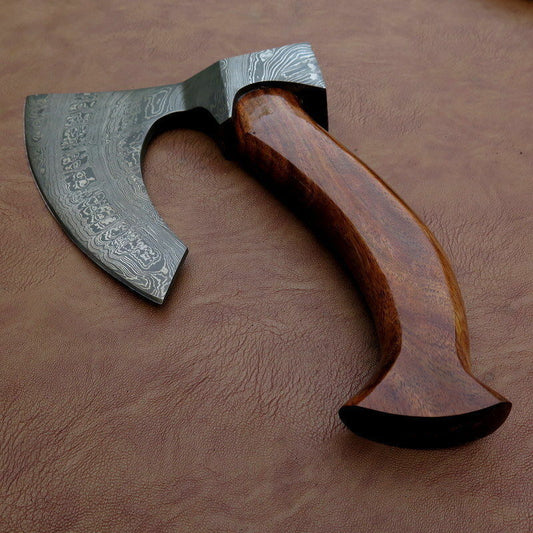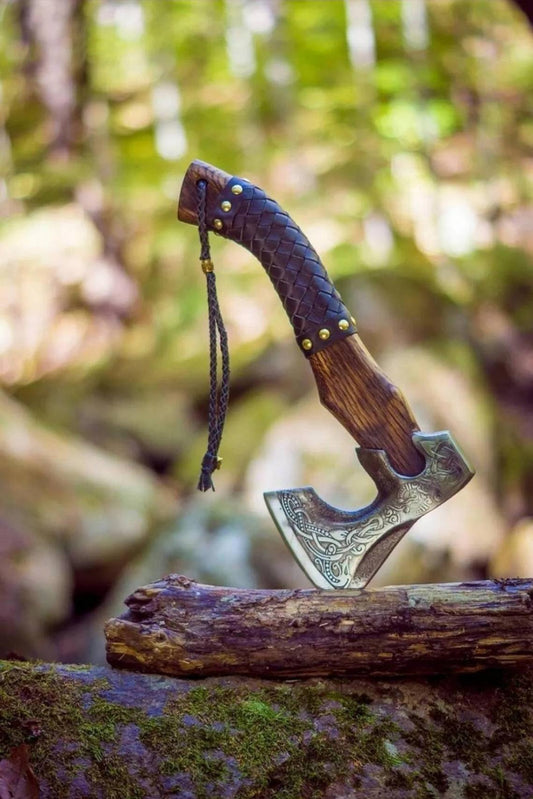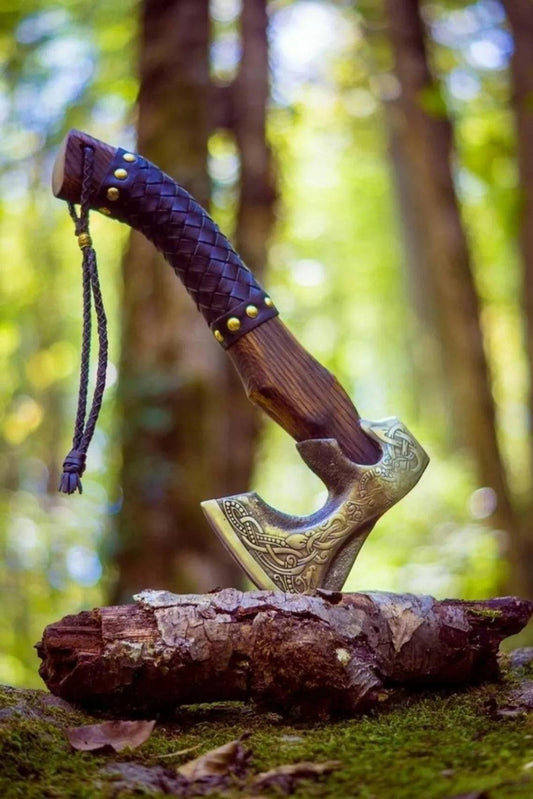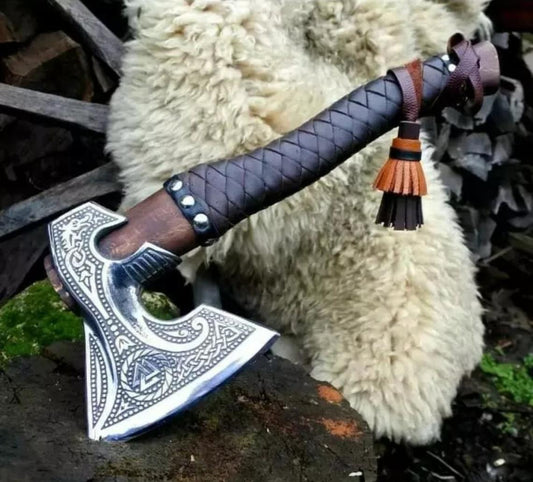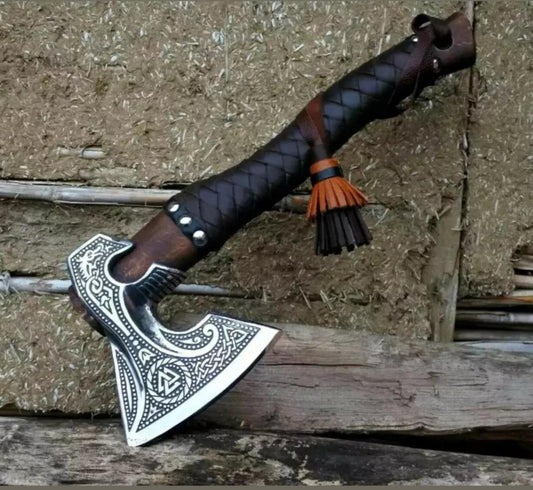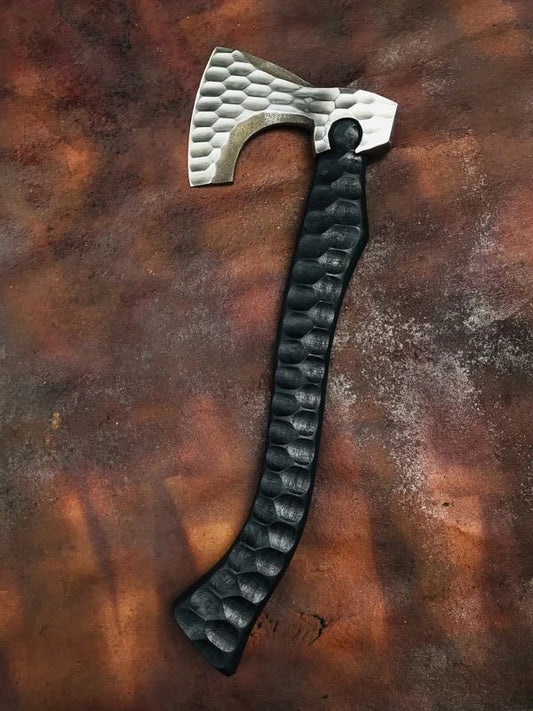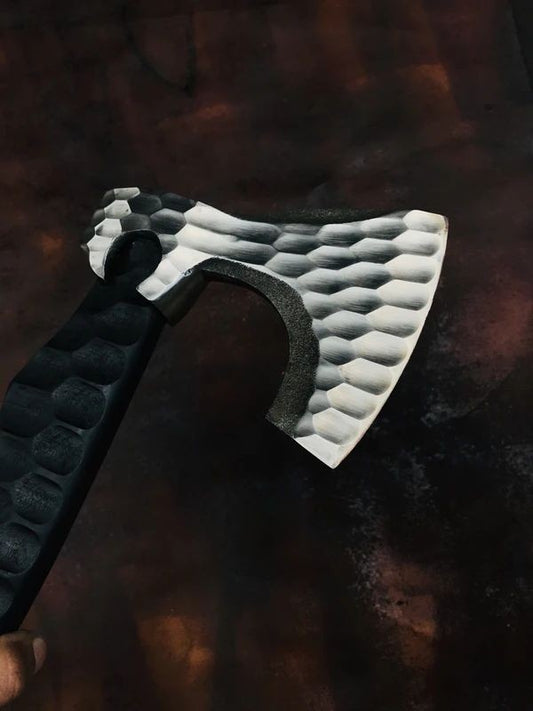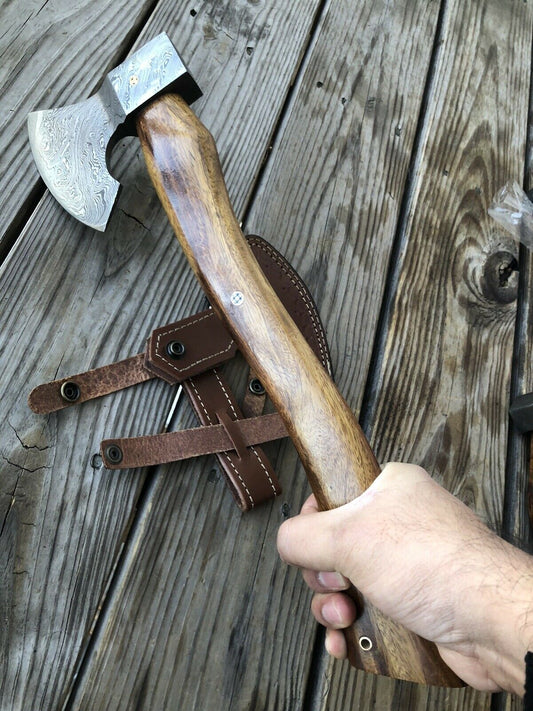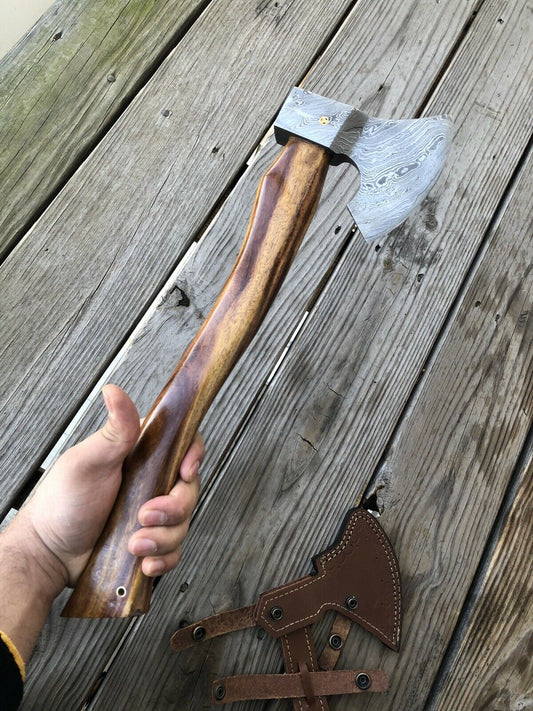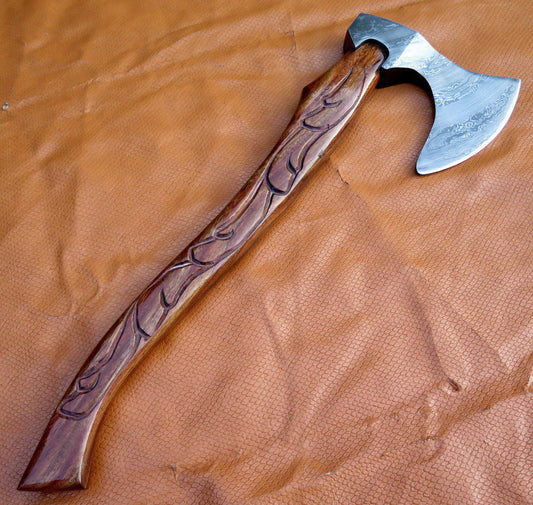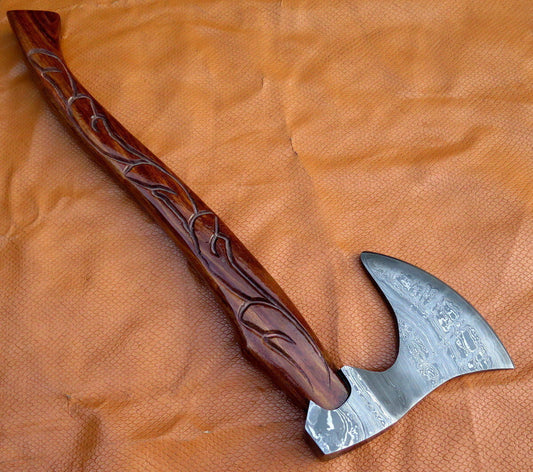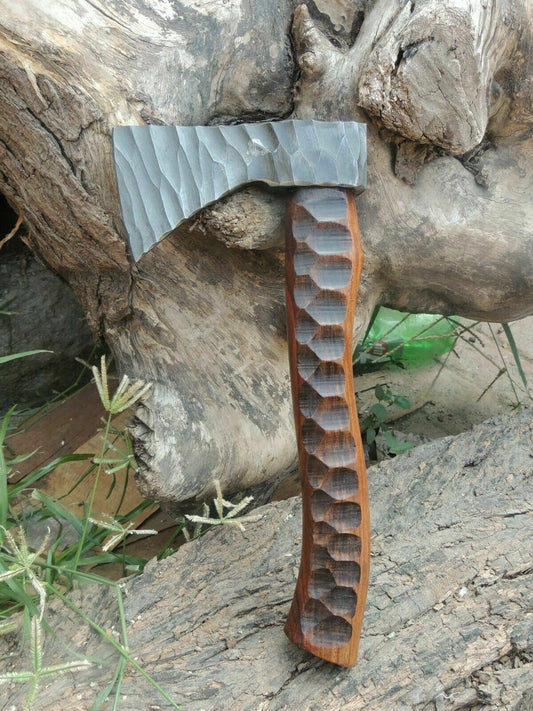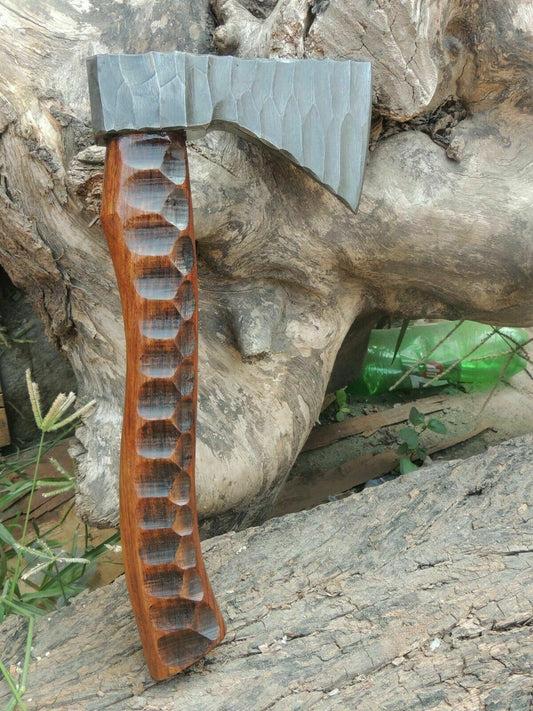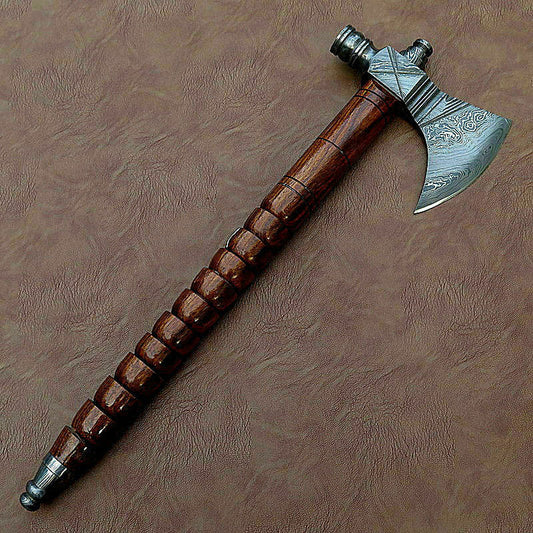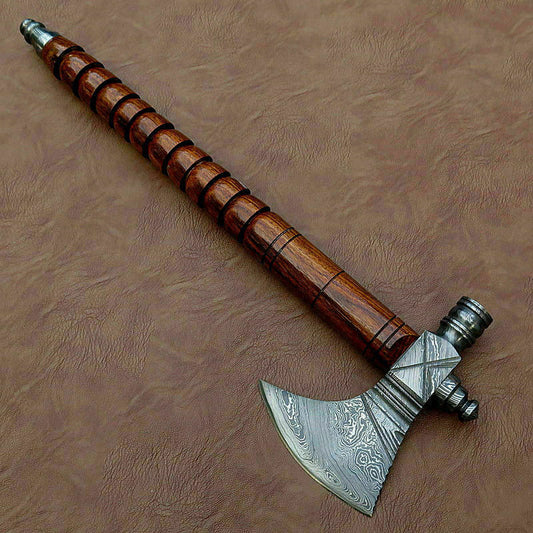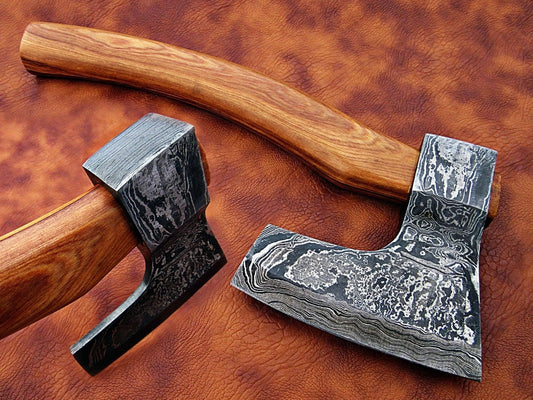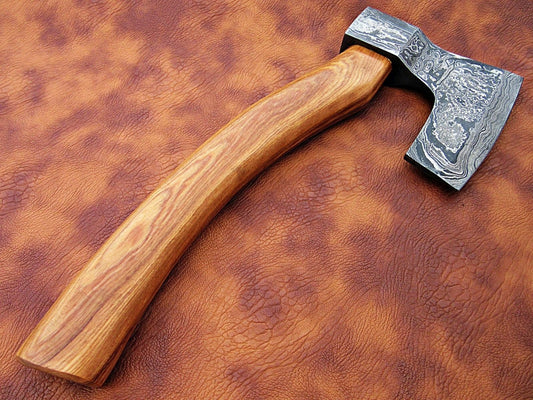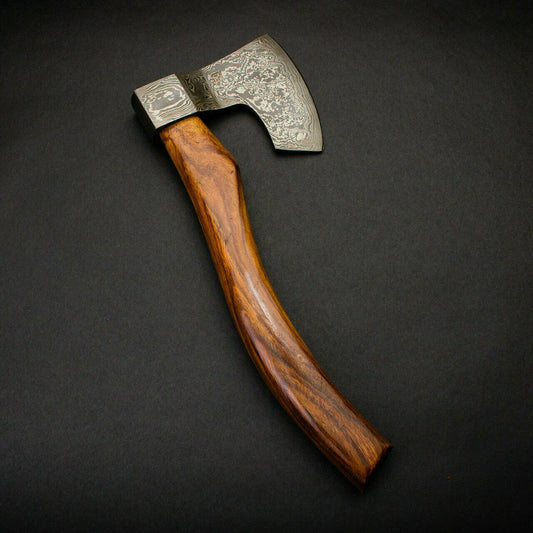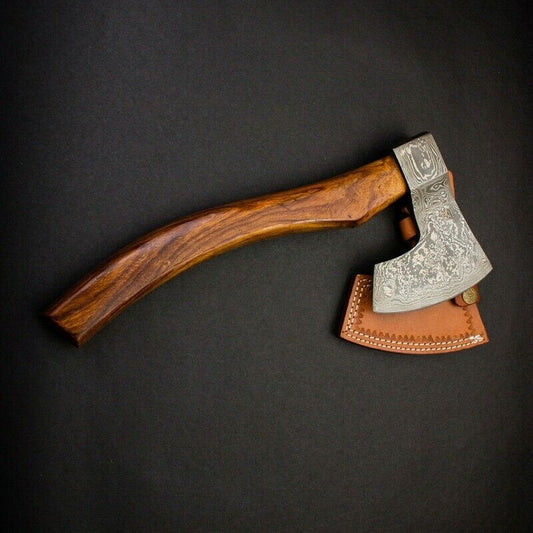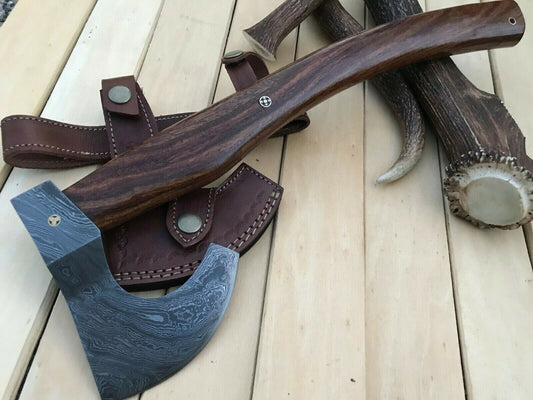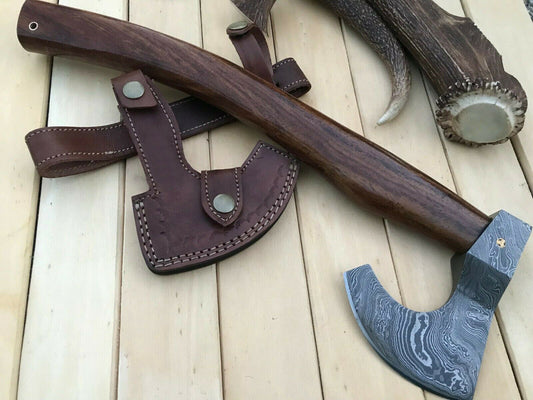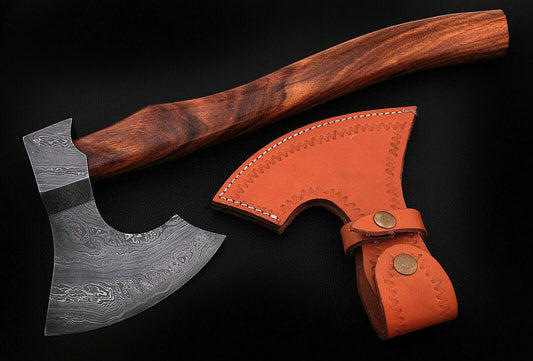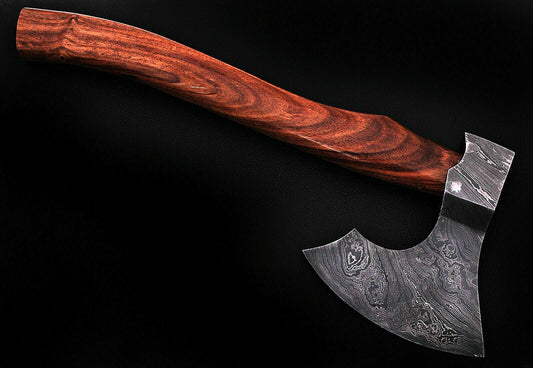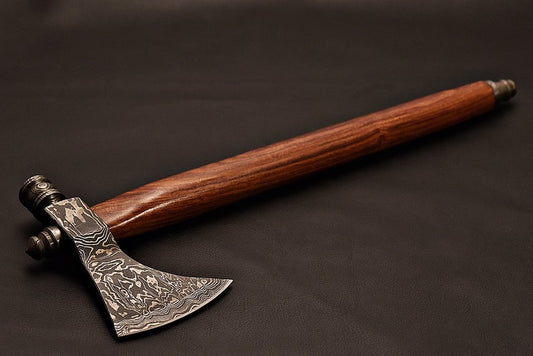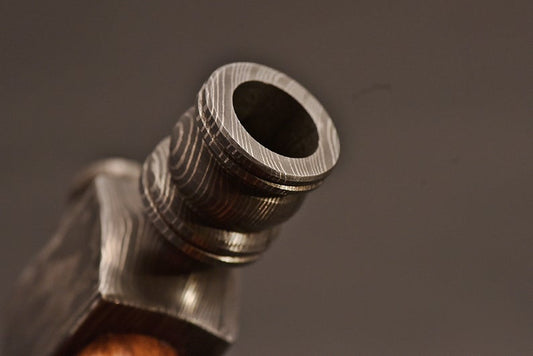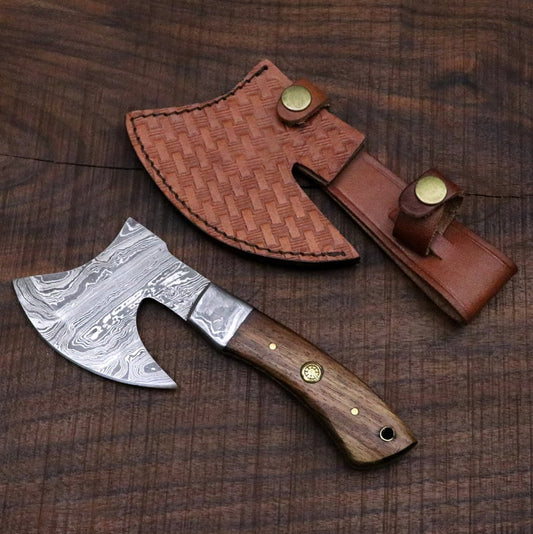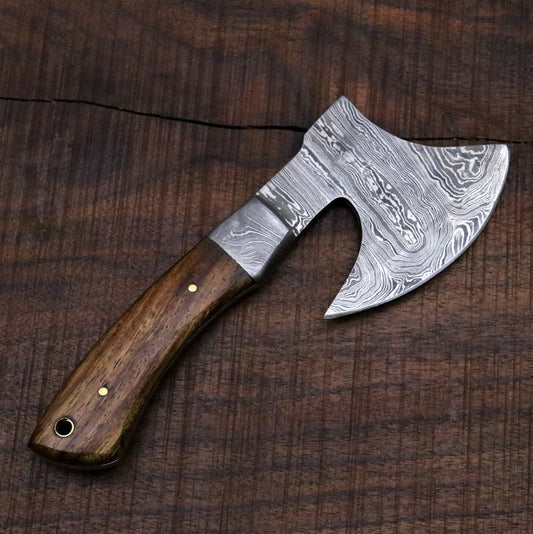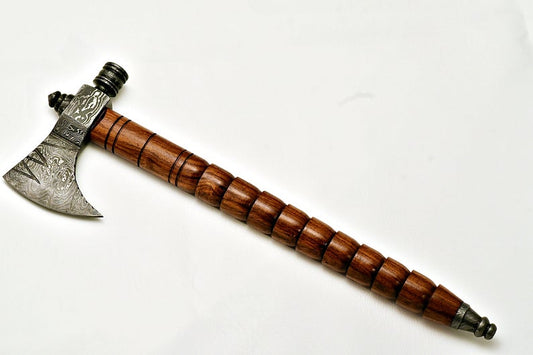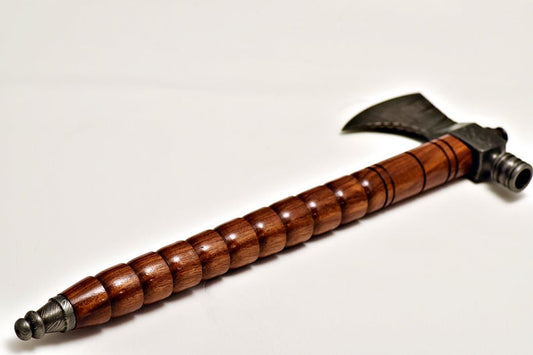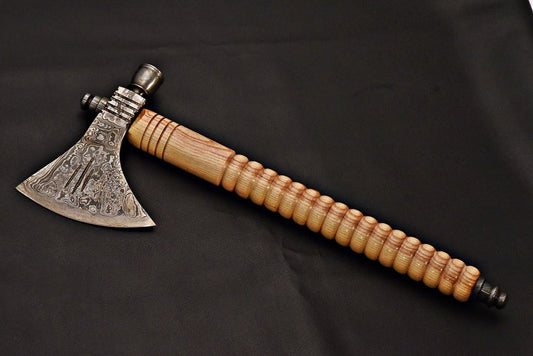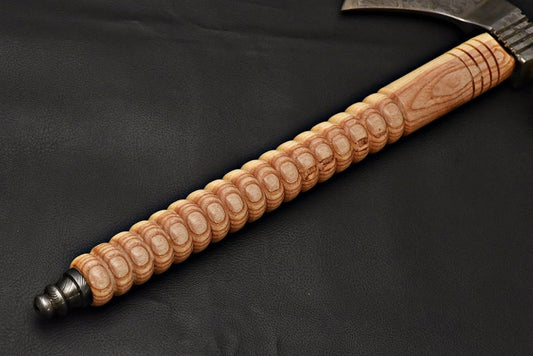Collection:
AXES
An axe is an ancient and versatile tool with a metal head featuring a cutting edge on a handle. They are designed for a variety of tasks, from felling trees to fine carpentry, and have been developed into many specialized forms over centuries. The right axe depends on its intended use, with different types optimized for specific jobs.
Main types of axes
- Felling axe: Used for cutting down trees by chopping across the wood grain. They typically have a sharp, thin, and flared head on a long handle for maximum leverage and force.
- Splitting axe or maul: Designed for splitting wood along the grain, often for firewood. They have heavier, wedge-shaped heads to force the wood apart rather than chopping it. A splitting maul is heavier than a splitting axe and can have a flattened poll (back end) for driving wedges.
- Hatchet: A small, one-handed axe with a short handle. They are great for tasks like creating kindling, clearing small branches, and other light chopping jobs.
- Carpenter's axe: A specialized tool for woodworking and log-building. It has a straight cutting edge for precision work and may have a flat poll for use as a hammer or a notch for pulling nails.
- Double-bit axe: Features two cutting edges on opposite sides of the head. This allows the user to have two different edges—for example, one for felling and a blunter one for limbing or knot work.
- Tactical axe: A modern, multifunctional tool used for survival situations, often with features like a hammer, shovel, or pry bar.
-
Throwing axe: Specifically designed for throwing at targets in competitions.
- Head: The metal part of the axe, including the bit (cutting edge), cheeks (sides), and poll (back end).
- Haft/Handle: The wooden, fiberglass, or plastic handle.
- Eye: The hole in the head where the handle is inserted
-
-
CUSTOM HAND FORGED DAMASCUS STEEL WALNUT WOOD TOMAHAWK AXE WITH LEATHER SHEATH
Vendor:SUSA KNIVESRegular price $160.00 USDRegular price -
Hand Forged Custom Viking Axe with Leather Wrap on Handle Custom Norse Axe, Gift for father, anniversary gift Battle Axe
Vendor:SUSA KNIVESRegular price $130.00 USDRegular price$99.99 USDSale price $130.00 USD -
Viking Axe Hand Forged Battle ready beautiful gift for him gift axe for groomsman Handmade Custom Axe, Gift for father, anniversary gift,
Vendor:SUSA KNIVESRegular price $130.00 USDRegular price$170.00 USDSale price $130.00 USDSale -
Hand forged axe
Vendor:SUSA KNIVESRegular price $140.00 USDRegular price -
Custom HAND FORGED DAMASCUS STEEL FULL TANG Axe
Vendor:SUSA KNIVESRegular price $120.00 USDRegular price -
HANDMADE CARVED HANDLE DAMASCUS STEEL VIKING AXE WITH SHEATH
Vendor:SUSA KNIVESRegular price $130.00 USDRegular price -
Amazing blades Handmade Damascus 10 inches Axe Rose Wood Handle With Sheath
Vendor:SUSA KNIVESRegular price $120.00 USDRegular price -
HANDMADE DAMASCUS STEEL TOMAHAWK AXE HATCHET WOOD HANDLE.
Vendor:SUSA KNIVESRegular price $130.00 USDRegular price -
HANDMADE DAMASCUS STEEL TACTICAL HATCHET AXE WALNUT WOOD WITH LEATHER SHEATH
Vendor:SUSA KNIVESRegular price $130.00 USDRegular price -
CUSTOM HAND FORGED DAMASCUS STEEL BURL WOOD CAMPING AXE WITH LEATHER SHEATH
Vendor:SUSA KNIVESRegular price $120.00 USDRegular price -
CUSTOM HAND FORGED DAMASCUS STEEL WALNUT WOOD CAMPING TOMAHAWK AXE WITH SHEATH
Vendor:SUSA KNIVESRegular price $140.00 USDRegular price -
CUSTOM HAND FORGED DAMASCUS STEEL WALNUT WOOD TOMAHAWK AXE WITH LEATHER SHEATH
Vendor:SUSA KNIVESRegular price $140.00 USDRegular price -
Handmade Damascus Steel Tomahawk /Axe with Rose wood
Vendor:SUSA KNIVESRegular price $160.00 USDRegular price -
Damascus Hatchet Small Axe with Walnut Wood Handle. Camping / Hunting / Survival / Viking / Groomsmen Anniversary Gift for men
Vendor:SUSA KNIVESRegular price $150.00 USDRegular price -
Handmade Tomahawk Damascus Steel SK Axe , Hatchet Axe with Rose wood
Vendor:SUSA KNIVESRegular price $180.00 USDRegular price -
Handmade Damascus Steel Tomahawk / SK Axe with Oil Wood Handle
Vendor:SUSA KNIVESRegular price $180.00 USDRegular price

